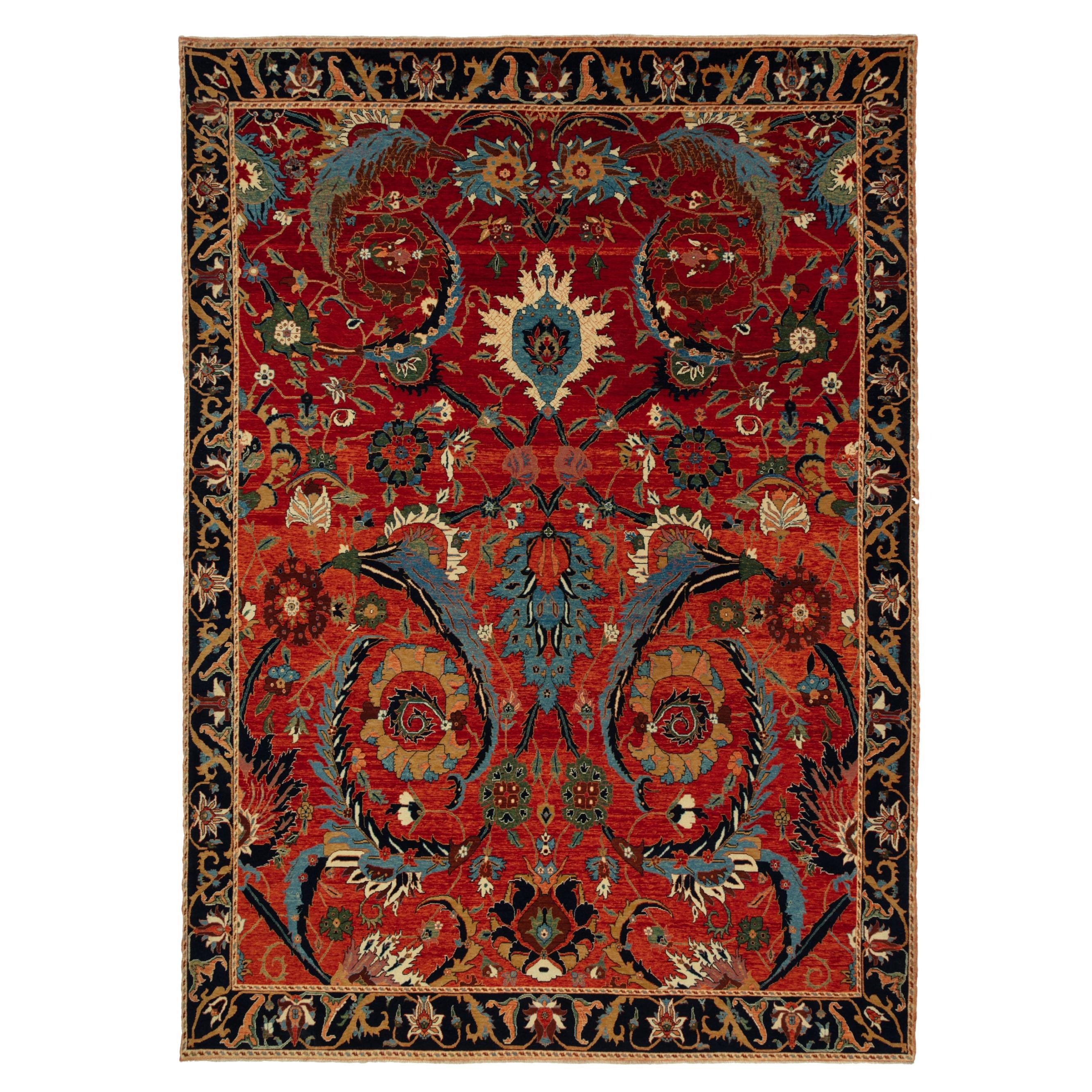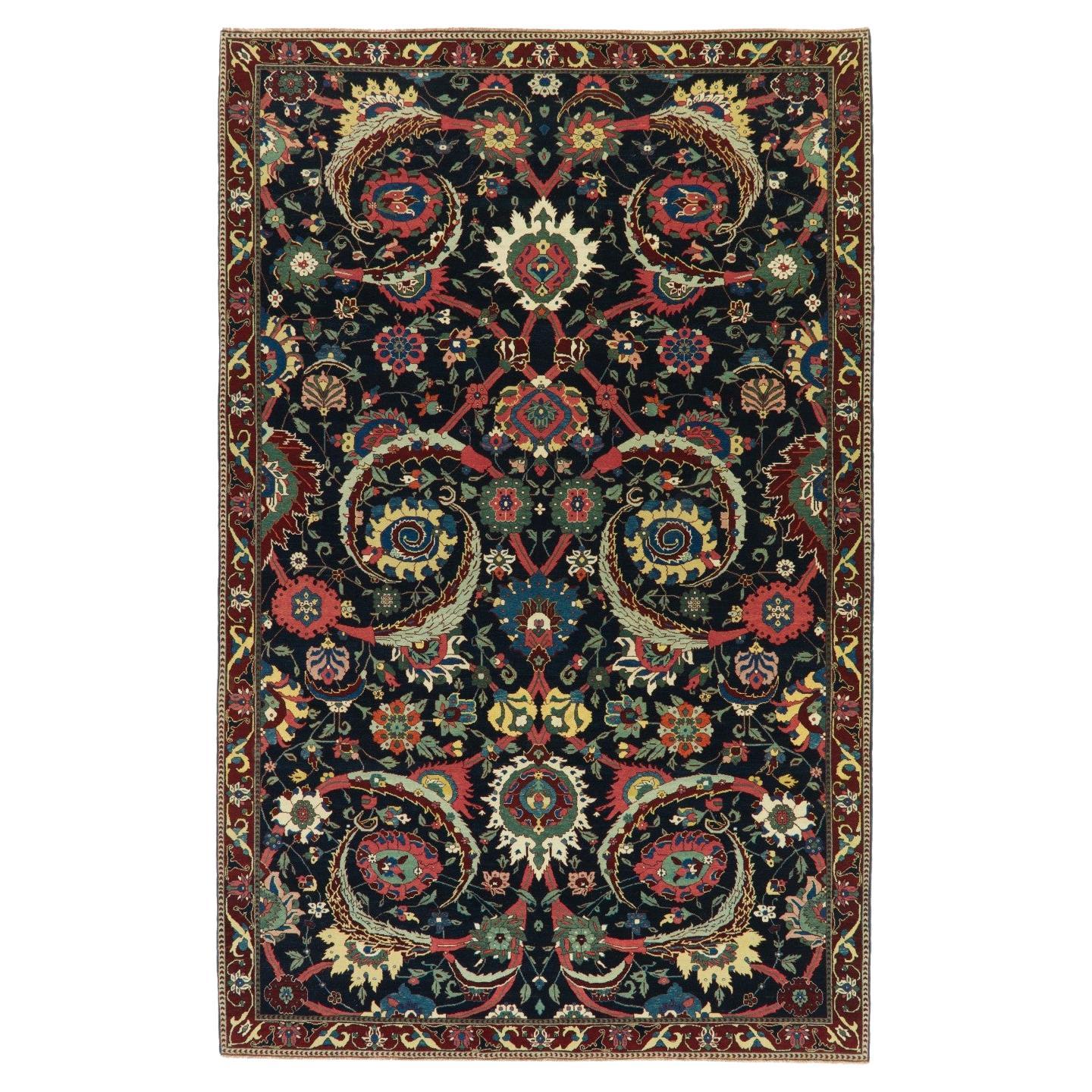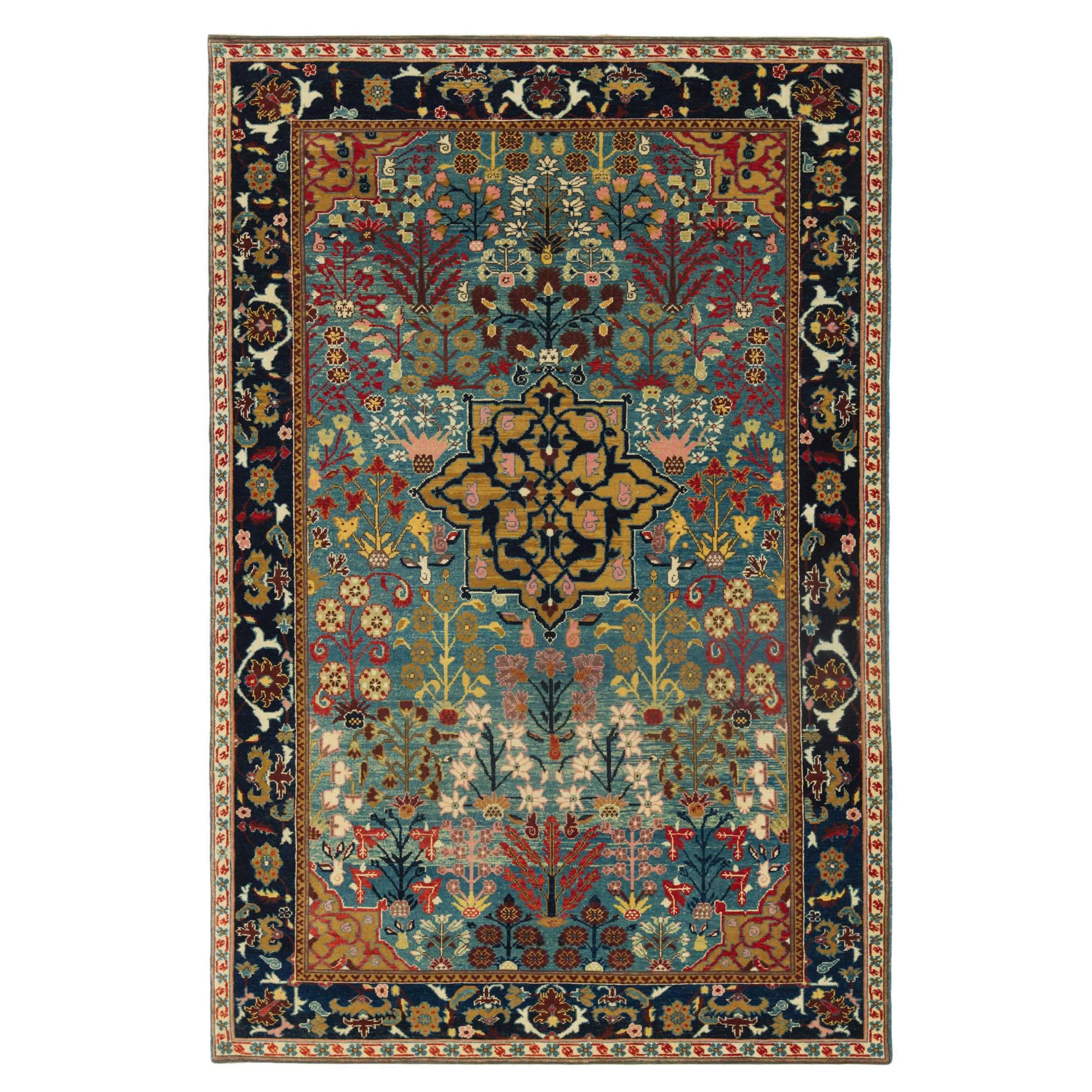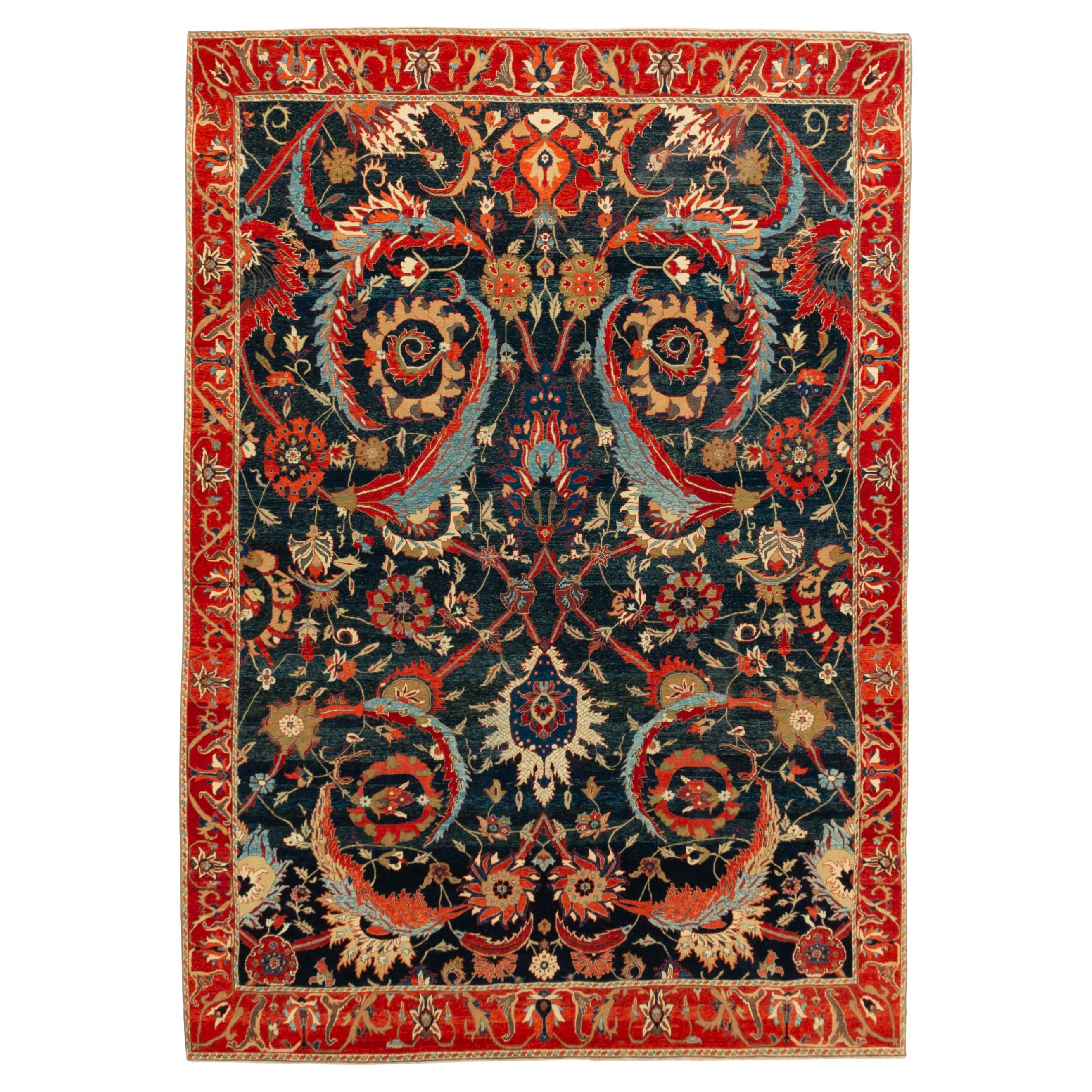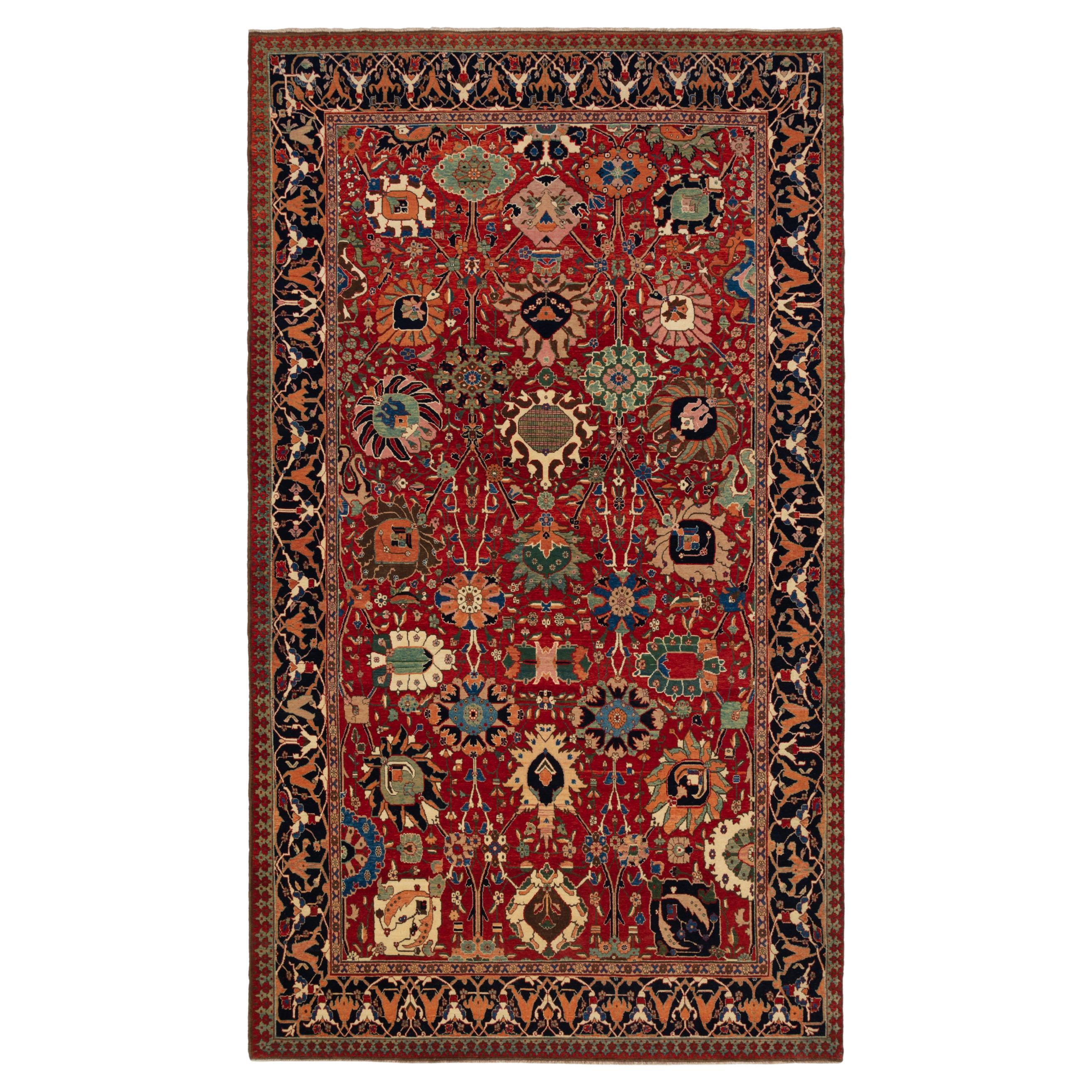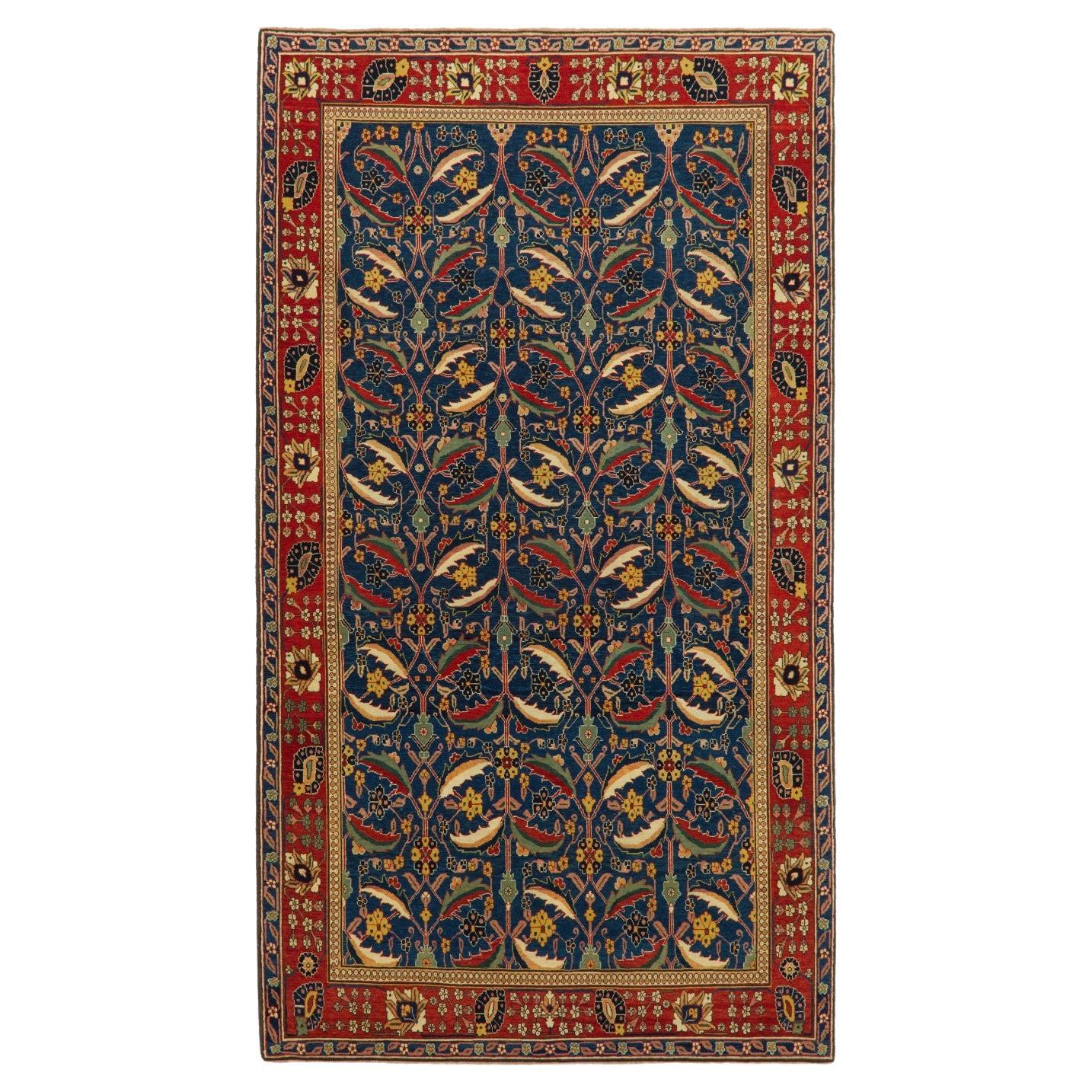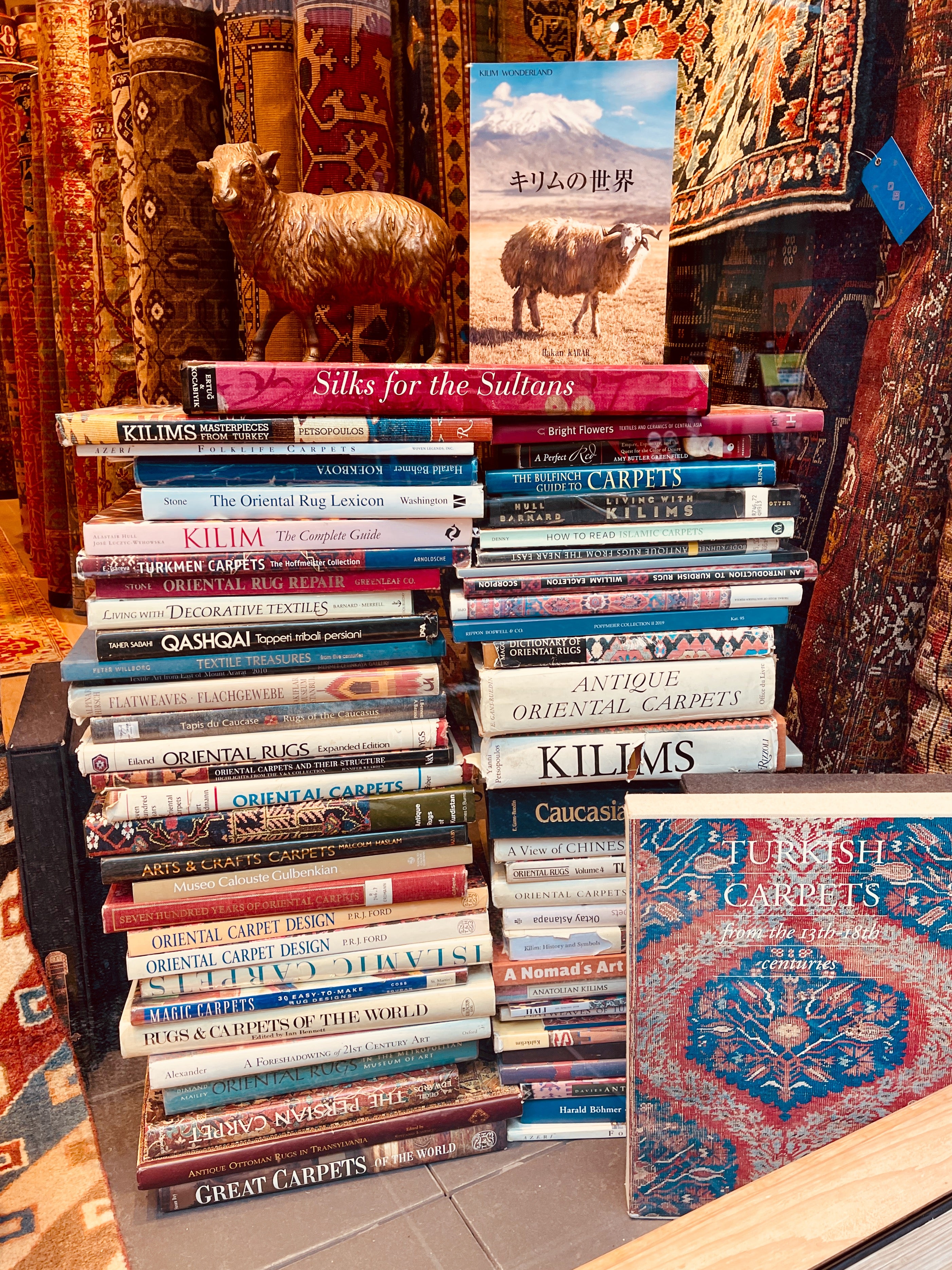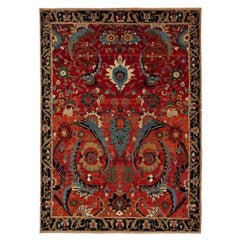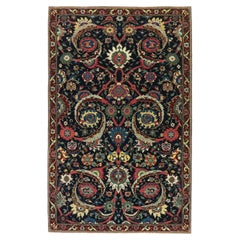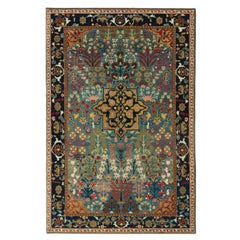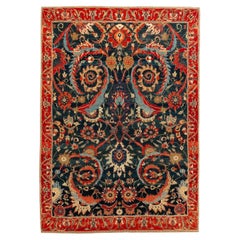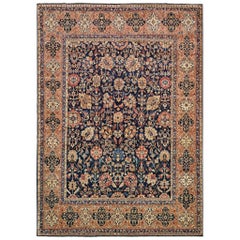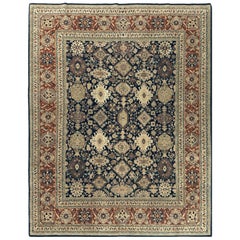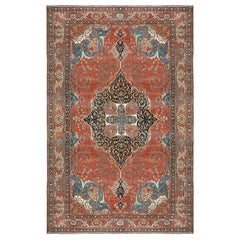Items Similar to Ararat Rugs Kerman Vase Technique Carpet 17th Century Revival Rug, Natural Dyed
Video Loading
Want more images or videos?
Request additional images or videos from the seller
1 of 8
Ararat Rugs Kerman Vase Technique Carpet 17th Century Revival Rug, Natural Dyed
$25,200
£19,134.96
€21,882.25
CA$35,208.05
A$39,159.04
CHF 20,447.63
MX$476,523.89
NOK 261,147.50
SEK 244,910.28
DKK 163,315.63
Shipping
Retrieving quote...The 1stDibs Promise:
Authenticity Guarantee,
Money-Back Guarantee,
24-Hour Cancellation
About the Item
The Kirman Vase Rug by Ararat Rugs is a meticulous revival of the legendary Safavid-era Kirman "Vase" carpets, which were originally woven in southeastern Persia in the early 17th century.
This rug is directly inspired by a historic Kirman Vase carpet fragment that was auctioned by Christie's, reflecting the elegance and grandeur of Persian court art.
Dimensions, Materials & Weaving Technique
✔ Size: 298 cm × 210 cm (9’9” × 6’10”)
✔ Material: Hand-spun wool pile, dyed using 100% natural dyes, warp and weft made of wool & cotton
✔ Weaving Technique: Symmetrical knots on a depressed warp, inclined to the right
✔ Knot Density: Ranges between 20 to 36 knots per square cm, with most around 25 knots per square cm
✔ Pile Height: 3 mm – A fine, luxurious texture
✔ Weight: 15.50 kg
✔ Origin: Handmade in Adıyaman, Turkey, preserving authentic Safavid weaving traditions
Authentic Natural Dye & Color Palette
This Kirman Vase rug is crafted using 13 distinct natural dyes, extracted from locally sourced plants, roots, and minerals, reflecting true Persian craftsmanship.
Navy Blue 432 – Made from indigo and pomegranate
Natural Wool Color 320 – Undyed, washed wool
Falu Red 400 – From the madder root, henna, and walnut shells
Sunray 405 – From henna
Russet 519 – A blend of pomegranate and Turkish henna
Imperial Red 415 – A deep Persian red from madder root
Celtic Blue 22 – Derived from indigo
Dark Sienna 431 – A variation of madder root dye
Pine Tree 420 – A deep green from henna and indigo
Cocoa Brown 109 – The natural, undyed brown of wool
Yellow Green 419 – A mix of henna and indigo
Cadet Blue 26 – From spurge and indigo
Light French Beige 421 – From tea, pomegranate, and walnut shells
This rich and varied palette mimics the vibrant yet refined color schemes of historical Kirman Vase carpets, bringing historical accuracy and artistic depth to this contemporary masterpiece.
Design & Historical Influence;
The Kirman Vase carpets were renowned for their complex, richly detailed compositions, often used in Persian royal courts and ceremonial halls.
This rug’s intricate floral and palmette arrangements are symmetrically balanced along the central vertical axis but are not mirrored horizontally, giving the composition a dynamic and organic feel.
✔ Signature Vase Motif – The hallmark of Kirman weaving, featuring ornate vases from which floral arrangements emerge
✔ Intricate Floral & Palmette Design – Sickle leaves, trees, mythical simurghs, fountains, and a variety of naturalistic birds
✔ Influence from Persian Miniature Painting – The depiction of cypress trees entwined with flowering prunus, reminiscent of Safavid manuscript art
✔ Birds & Mythological Creatures – Includes peacocks, parrots, birds of prey, ducks, storks, and simurghs, intricately placed within the vines and foliage
The birds in this design are not just decorative elements but an integral part of the composition, reflecting the Safavid court’s fascination with naturalism, as seen in tilework, textiles, and illuminated manuscripts.
Artistic & Historical Significance
This Kirman Vase rug takes inspiration from one of the rarest groups of Persian carpets.
It shares similarities with the Clark-Corcoran Sickle-Leaf carpet, the Gulbenkian carpet in Lisbon, and the Rothschild carpet, each showcasing a unique interpretation of the Vase technique.
✔ Connection to the Royal Courts of Persia – Arthur Upham Pope suggested that these carpets were used as dias covers, with thrones placed at one end, creating an illusion of sitting in the center of a vast, extended carpet.
✔ Dynamic Design – The vertical arrangement of elements, including cypress trees, palmettes, and mythical creatures, suggests this carpet was commissioned for ceremonial or royal use.
✔ Exceptional Draughtsmanship – As May Beattie noted, the finest Vase carpets were likely created under court patronage, requiring skilled designers and master weavers.
The symbolic richness of this rug, combined with its faithful revival of the original design, makes it a true collector’s piece.
Availability & Pricing;
Weight: Approximately 15.50 kg
Stock Location: Tokyo showroom (Ready to Ship)
Price: $25,200
This Kirman Vase Rug is a masterpiece that brings the elegance and historical grandeur of Safavid-era Persian weaving into the modern world. Its intricate design and rich color palette make it a timeless addition to any space.
Dimensions:
9 ft 9 in x 6 ft 10 in ( 298cm x 210cm )
- Creator:Ararat Rugs (Manufacturer)
- Dimensions:Width: 82.68 in (210 cm)Length: 117.33 in (298 cm)
- Style:Revival (In the Style Of)
- Materials and Techniques:
- Place of Origin:
- Period:
- Date of Manufacture:2024
- Production Type:New & Custom(One of a Kind)
- Estimated Production Time:Available Now
- Condition:
- Seller Location:Tokyo, JP
- Reference Number:Seller: 006751stDibs: LU8206244038262
ARARAT RUGS
We know and believe that the geography we come from, our past, and our lifestyle are the most important bond between us to carry the oriental carpet art and culture to the next generations along with our core values in our ongoing growth journey.
We are aware that the way to achieve this goal and carry this priceless art and culture to the future depends on a lot of work with all our people every day while adhering to our core values.
For us, art is meaningful in the sense that it brings together various cultures around the world. It is an honor for us that oriental carpet art and culture have been instrumental in this for centuries and that we are a part of this business.
We are tirelessly keeping an eye on auction house information around the world about carpets. New York's Metropolitan, London's Victoria & Albert Museums, and other famous art museums, as well as small specialized museums that house private collections, and books about oriental carpets to collect information on outstanding carpet designs and patterns from around the world. It's our Self-improving and Self-developing culture.
As Turkish Culture of Hospitality, the Kurdish Culture of Generosity, and as Japanese Culture of Business Punctuality; are the most important values that this multicultural background has taught and bequeathed to us. It is essential and valuable for us that you feel this feeling not only by looking at our oriental carpets but from the moment you contact us.
About the Seller
5.0
Platinum Seller
Premium sellers with a 4.7+ rating and 24-hour response times
Established in 1970
1stDibs seller since 2023
55 sales on 1stDibs
Typical response time: 3 hours
- ShippingRetrieving quote...Shipping from: Tokyo, Japan
- Return Policy
Authenticity Guarantee
In the unlikely event there’s an issue with an item’s authenticity, contact us within 1 year for a full refund. DetailsMoney-Back Guarantee
If your item is not as described, is damaged in transit, or does not arrive, contact us within 7 days for a full refund. Details24-Hour Cancellation
You have a 24-hour grace period in which to reconsider your purchase, with no questions asked.Vetted Professional Sellers
Our world-class sellers must adhere to strict standards for service and quality, maintaining the integrity of our listings.Price-Match Guarantee
If you find that a seller listed the same item for a lower price elsewhere, we’ll match it.Trusted Global Delivery
Our best-in-class carrier network provides specialized shipping options worldwide, including custom delivery.More From This Seller
View AllArarat Rugs Kerman Vase Technique Carpet 17th Century Revival Rug, Natural Dyed
By Ararat Rugs
Located in Tokyo, JP
The design source of the carpet comes from the book Museo Calouste Gulbenkian, Printed by Gulbenkian Museum Lisbon, in 2015, nr.52. This is a vase-technique carpet design in the 17th...
Category
21st Century and Contemporary Turkish Revival Persian Rugs
Materials
Wool, Natural Fiber, Organic Material
Ararat Rugs Kerman Vase Technique Carpet 17th Century Revival Rug, Natural Dyed
By Ararat Rugs
Located in Tokyo, JP
Introducing the exquisite Kerman Vase-Technique Carpet from Ararat Rugs, a masterful revival of the renowned 16th-century Sickle-Leaf carpets, such as the one housed in the Gulbenkia...
Category
21st Century and Contemporary Turkish Revival Persian Rugs
Materials
Wool, Natural Fiber, Organic Material
Ararat Rugs Kerman Vase Technique Carpet 17th Century Revival Rug, Natural Dyed
By Ararat Rugs
Located in Tokyo, JP
The design source of the carpet comes from the book How to Read – Islamic Carpets, Walter B. Denny, The Metropolitan Museum of Art, New York 2014 fig.18. This is a vase-technique wit...
Category
21st Century and Contemporary Turkish Revival Persian Rugs
Materials
Wool, Natural Fiber, Organic Material
Ararat Rugs Kerman Vase Technique Carpet 17th Century Revival Rug, Natural Dyed
By Ararat Rugs
Located in Tokyo, JP
The source of carpet comes from the book Museo Calouste Gulbenkian, Printed by Gulbenkian Museum Lisbon, in 2015, nr.52. This is a vase-technique carpet design in the 17th century in the Kerman region, of Persia. In the 16th century, in Safavid Persia, medallion rugs were among the most appreciated, but at the end of the century and the beginning of the next, a taste for decoration with floral motifs, coils, and palmettes gradually emerged, covering the entire field. This is the case, for this example design, with rugs from eastern and southern Persia. Among the latter are the famous vase-type rugs attributed to the Kerman region, to which our design belongs. Considered by some specialists to be quite atypical, this rug made in Persia, probably in Kirman in the time of Shah Abbas (1587-1625), presents, on a dark blue background, an exuberant and dynamic vegetal decoration in which horizontal and vertical rows of palmettes and stand out, due to their dimension and spiral movements, large sickle-shaped leaves, alternating with branches and flowers. The very narrow rim, with a red background, is filled with a frieze of coils and flowers. It’s a famous carpet design as ‘Kerman Vase Technique Rug, The Most Expensive Rug...
Category
21st Century and Contemporary Turkish Revival Persian Rugs
Materials
Wool, Natural Fiber, Organic Material
Ararat Rugs Kerman Vase Technique Carpet 17th Century Revival Rug, Natural Dyed
By Ararat Rugs
Located in Tokyo, JP
The design source of the carpet comes from the book by Dimand, Maurice S., and Jean Mailey. Oriental Rugs in the Metropolitan Museum of Art. New York: The Metropolitan Museum of Art,...
Category
21st Century and Contemporary Turkish Revival Persian Rugs
Materials
Wool, Natural Fiber, Organic Material
Ararat Rugs Kerman Vase Technique Carpet 17th Century Revival Rug, Natural Dyed
By Ararat Rugs
Located in Tokyo, JP
The Kerman Vase-Technique Carpet (Model: ART00676) by Ararat Rugs is a distinguished creation inspired by southeastern Persia's renowned 17th-century Kerman "Vase" carpets. This piec...
Category
21st Century and Contemporary Turkish Revival Persian Rugs
Materials
Wool, Natural Fiber, Organic Material
You May Also Like
Antique Hajijalili Revival Rug Fable Collection
By Mehraban Rugs
Located in WEST HOLLYWOOD, CA
Rug Number
26511
Size
7' 9" X 10' 10"
Design
Hajijalili
Collection
Traditional Re-Creations
Material
Wool
Texture
Pile Weave
Origin
Pakistan
Age
New
Category
2010s Pakistani Central Asian Rugs
Materials
Wool
Natural Dye Sarouk Farahan Style Rug
By Mehraban Rugs
Located in WEST HOLLYWOOD, CA
A detailed natural dye Sarouk Farahan style rug. This beautiful recreation encompasses traditional Sarouk Farahan motifs and weaves in deep blue, red, and ivory colors. Sarouk Faraha...
Category
21st Century and Contemporary Afghan Sarouk Farahan Central Asian Rugs
Materials
Wool
Antique Persian Sultanabad Rug Allover Design
By Mehraban Rugs
Located in WEST HOLLYWOOD, CA
Vivid antique Sultanabad workshop rug with all-over Herati lattice motif in the central field and floral lattice with animal motifs in the border. Central field has a dark navy groun...
Category
Antique Late 19th Century Persian Persian Rugs
Materials
Wool
Antique Persian Sarouk Farahan Rug
By Mehraban Rugs
Located in WEST HOLLYWOOD, CA
Our beautiful antique Persian Sarouk Farahan rug is an over sized piece that is in stock at our Los Angeles retail location. Persian carpets known as Farahan are weaved from an area ...
Category
Early 20th Century Persian Sarouk Farahan Persian Rugs
Materials
Wool
Antique Persian Sarouk Rug
Located in Evanston, IL
One of the top high end Persian carpet maker.
The source of this important provenance has been in the village of Sarouk. North of Arak (formerly Sultanabad). Sarouks are known to be...
Category
Early 20th Century Persian Sarouk Farahan Persian Rugs
Materials
Wool
$1,240 Sale Price
20% Off
Antique Persian Heriz Rug, circa 1900
Located in Secaucus, NJ
Antique Persian Heriz rug, circa 1900, measures: 9'4 x 11'7. This wonderful antique Heriz rug has a light and easy flow to the design and color scheme. The combination of the soft bl...
Category
Early 20th Century Persian Heriz Serapi Persian Rugs
Materials
Wool
More Ways To Browse
Pomegranate Vase
Dining Throne
Arthur Court Designs
Manuscript Leaf
Celtic Revival
Rothschild Vase
Cypress Root
Vase Stork
9 Ft Mirror
Arthur Court Shell
16 Seater Table
Antique Fish Print
Antique Glass Decanters With Stoppers
Art Deco Wine Glasses
Black And Gold Console Table
Blue Bird Plate
Chair By Vitra
Coffee Tables Resin And Wood
